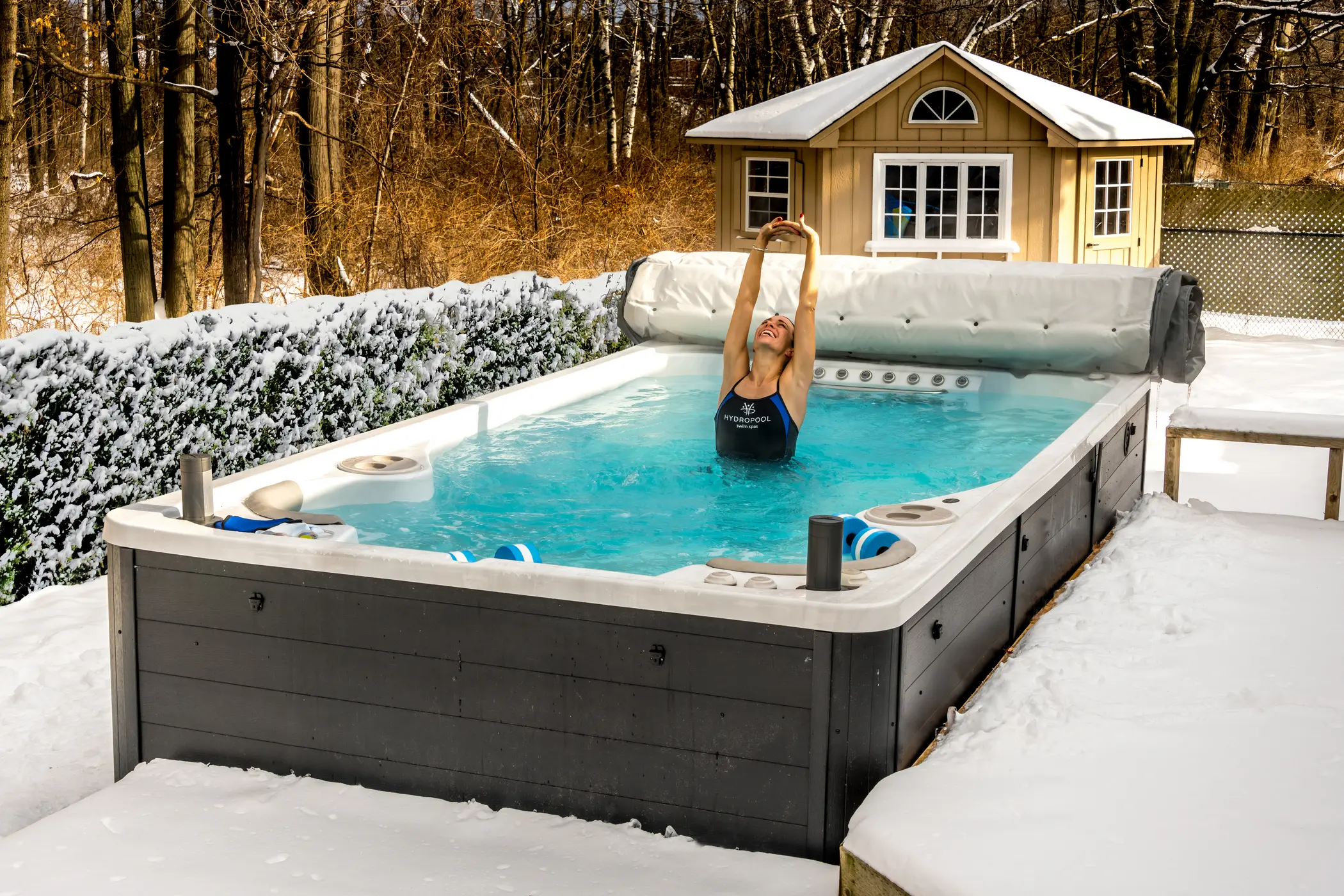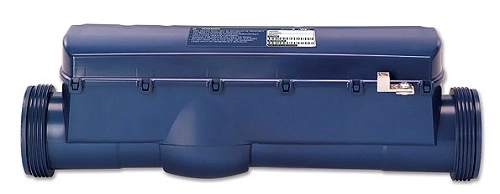How Are Swim Spas Heated?

Swim spas offer the chance to swim in a heated environment in your backyard, all year round.
Ok, but wait, how do swim spas operate year-round? How do they keep your water warm?
A crucial component of this experience is the heater, which ensures that the water remains at a comfortable temperature regardless of the season. We get asked about how swim spas work frequently at our Hydropool retail outlets and we want to explain the process here so you can be confident when you buy a swim spa it will actually stay warm all winter.
It’s all about the heater, which is really the heart of any decent swim spa. We will cover:
- What is a swim spa heater?
- How do the heaters work?
- Heater components
- The heating process
By the end, we hope you’ll have a strong sense of what a swim spa heater can do and how it functions to keep your swim spa operating all year-round.
How Does a Swim Spa Heater Work?

A swim spa heater is small but mighty, helping your swim spa stay warm all winter long, including sizeable units such as the Hydropool AquaTrainer 19DTAX.
Swim spa heaters operate on the principle of what’s called electrical resistance heating. When electricity flows through a conductive element within the heater, it generates heat (think of electricity lighting up the coils of your toaster). This heat is then transferred to the water circulating through the swim spa.
What Are the Parts of a Swim Spa Heater?
Here is a breakdown of the key components and the process involved.
Heating Element: The heating element is the core component of the heater. Made of materials like stainless steel or titanium, it efficiently conducts electricity and generates heat when current passes through it.
Thermostat: The thermostat is responsible for regulating the water temperature. It allows the user to set a desired temperature and maintains it by controlling the heater’s on and off cycles based on the water’s current temperature.
Pump: The pump circulates water through the heater, ensuring that all the water in the swim spa is heated evenly. It draws water from the swim spa, pushes it through the heater where it is warmed, and then returns the heated water back to the swim spa.
Control System: The control system oversees the operation of the heater, thermostat, and pump. It ensures that the heater operates safely and efficiently, preventing overheating and other potential issues.
How Does a Swim Spa Heater Create Warm Water?
This is a step-by-step guide on how a heater works to keep your swim spa working in the winter.
Water Circulation: The pump draws water from the spa and circulates it through the heating system. This continuous circulation ensures that the water is heated uniformly.
Heating: As water flows through the heater, it comes into contact with the heating element. The electrical resistance of the heating element generates heat, which is then transferred to the water.
Temperature Regulation: The thermostat monitors the water temperature and compares it to the set temperature. If the water temperature drops below the desired level, the thermostat activates the heating element. Once the desired temperature is reached, the thermostat shuts off the heater to prevent overheating.
Energy Efficiency: Modern heaters are designed to be energy-efficient. They utilize advanced insulation and energy-saving technologies to minimize heat loss and reduce energy consumption. This ensures that your swim spa remains warm without significantly increasing your electricity bill, even if you have a large or full-sized swim spa.
What Are the Types of Swim Spa Heaters?
While the basic principles of swim spa heaters remain the same, there are various types available that cater to different needs and preferences.
Electric Heaters: This is the type we have been discussing in this article. If you happen to be looking at a swim spa without electrical heat, we’d advise you to keep looking (or let us know, maybe they’ve got something figured out!).
Heat Pumps: Heat pumps work by extracting heat from the air or ground and transferring it to the water. While they are more energy-efficient compared to electric and gas heaters, they may take longer to heat water and they add significant costs. These are most often sold as after-market additions and are increasingly popular in Europe. If you’re interested in this, make sure you speak to your retailer in advance, because your swim spa will have to be set up internally to allow this method and you will require a separate pad to be built to house the heat pump. Estimate an additional $5,000 (Cdn) at least to add a heat pump.
Solar Heaters: Solar heaters use energy from the sun to heat the water. They are environmentally friendly and can significantly reduce energy costs, but their effectiveness depends on the availability of sunlight – again, you will want to talk to your local retailer to see if this is a viable solution in your specific area. Costs will vary regionally as well.
How Do You Maintain a Swim Spa Heater?
You shouldn’t have to do anything to maintain your swim spa’s heater, other than normal water maintenance.
- A clean filter ensures proper water circulation, which is crucial for the heater’s efficiency. Regularly clean or replace the filter according to the manufacturer’s recommendations.
- Maintain balanced water chemistry to prevent corrosion and scale buildup on the heating element. Proper pH and alkalinity levels help extend the lifespan of your heater.
- Have a professional technician inspect and service your swim spa heater if anything isn’t working. This approach can identify potential problems early and keep your heater running smoothly.
What Can Go Wrong With a Swim Spa Heater?
A good spa heater that has been well-maintained should last at least five years and often far, far longer. However, even with proper maintenance, heaters may encounter issues when they try to heat a swim spa.
Heater Not Turning On: If the heater does not turn on, check the thermostat settings and ensure that the pump is functioning properly. Verify that the heater is receiving power.
Water Not Heating: If the water is not heating, inspect the heating element for any signs of damage or wear. Also, check the control system and thermostat to ensure they are working correctly.
Overheating: If the water temperature exceeds the set temperature, the thermostat may be malfunctioning. Inspect the thermostat and replace it if necessary.
Error Codes: Modern heaters are equipped with digital displays that show error codes when a problem occurs. Refer to the user manual to decipher the error code and take appropriate action.
When in doubt, reach out to your local retailer, who can help you with service queries.
Your Year-Round Fitness Pool
One of the best perks of a swim spa is that it can be used year-round, without extreme costs. This is all entirely possible due to the swim spa heater.
While the jets get all the attention because they create the massage, the fun and the swim, the heater is what’s doing the actual work that allows you to enjoy those elements in the first place.
We hope this article has answered all your questions about how swim spa heaters function and what they do. If you have further questions, don’t hesitate to reach out by contacting a local retailer.






